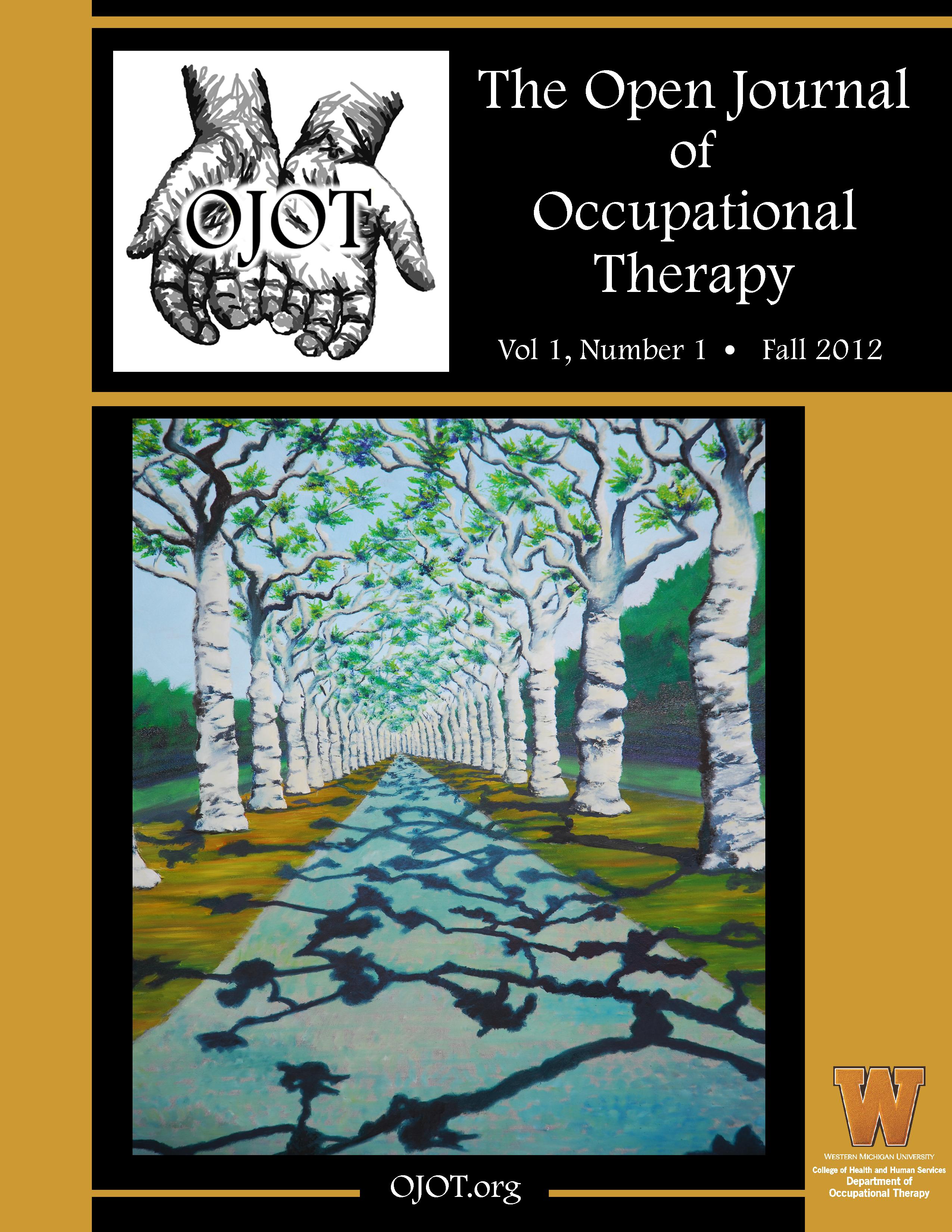ScholarWorks > HHS > OT > OJOT > Vol. 11 > Iss. 2 (2023)
Credentials Display
Diane E MacKenzie, PhD, OT Reg.(N.S.), OTR; R. Lee Kirby, MD, FRCPC; Cher Smith, MSc, OT Reg.(N.S.); Zainab Al Lawati, MD; Eric Lee, BSc; Sorayya Askari, PhD, OT Reg.(N.S.)
Abstract
Background: Moving a wheelchair over a low threshold is an entry-level mobility skill. Observation is critical to the assessment and training of this skill. The primary objective of this exploratory pilot study was to determine if a difference between novice and expert visual attention allocation pattern was linked to the accuracy of rating skill performance and decision confidence.
Methods: Twelve expert occupational therapists and nine non-expert occupational therapy students observed 30 first-attempt recordings of able-bodied persons learning the low threshold skill. Randomized recordings included 10 recordings from each rating group of “pass,” “pass with difficulty" (pwd), and “fail.” Skill ratings, confidence ratings, time to decision, and SR Eyelink 1000+ monitored eye movements were recorded.
Results: No significant group differences were found in the correct identification skill rating, though significant relationships were found with experts rating higher confidence in their decision-making and generally faster reaction times. While trends of eye movements differences were found between groups, only the number of areas of interest viewed in pwd videos was a potential rating correctness predictor.
Conclusion: Improved confidence in decision-making did not mean improved assessment accuracy. The pwd video stimuli created the opportunity for assessing observation patterns differences. Further study is recommended.
Recommended Citation
MacKenzie, D. E., Kirby, R., Smith, C., Al Lawati, Z., Lee, E., & Askari, S. (2023). Novice and Expert Observer Accuracy of the Threshold Wheelchair Skill: A Pilot Eye-Tracking Study. The Open Journal of Occupational Therapy, 11(2), 1-10. https://doi.org/10.15453/2168-6408.2043



Comments
The authors declare that they have no competing financial, professional, or personal interest that might have influenced the performance or presentation of the work described in this manuscript.